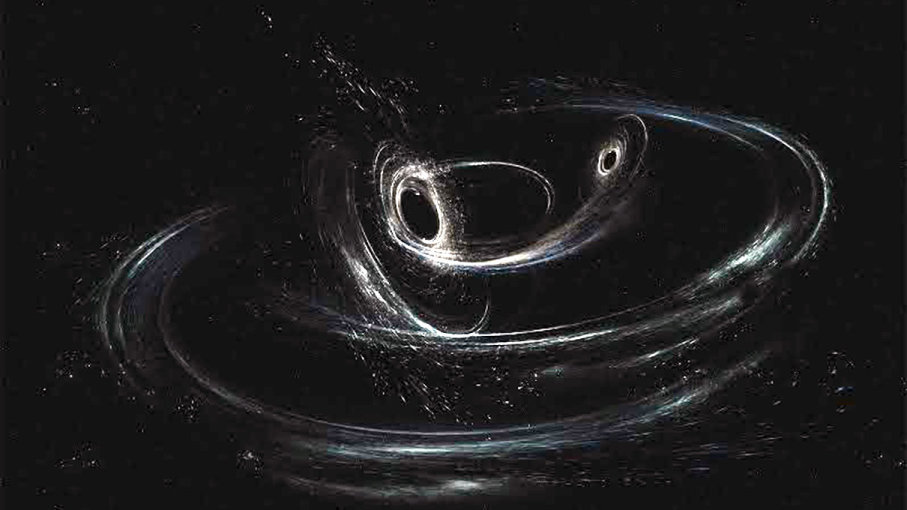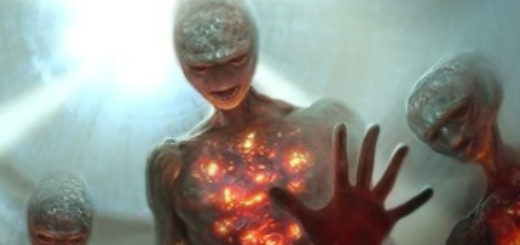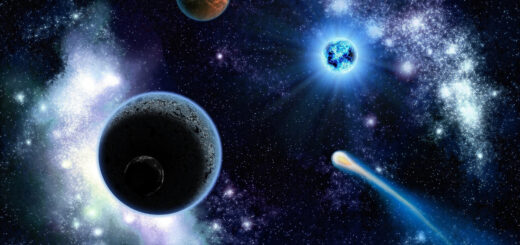Gravitational Waves Detected for a Third Time, Revealing Another Black Hole Collision

For the third time, scientists have detected a spacetime rumble caused by a violent collision of two black holes. The Laser Interferometer Gravitational-wave Observatory (LIGO) made the detection, determining that the two black holes merged to create one large black hole in a galaxy about 3 billion light-years away.
“We have observed – on the 4th of January, 2017 – another massive black hole-black hole binary coalescence; the in-spiral and merging of black holes 20 and 30 times the mass of our sun,” Dave Shoemaker, a senior research scientist who works at Massachusetts Institute of Technology (MIT) and the spokesperson for the LIGO Scientific Collaboration, told reporters during a special news briefing on Wednesday (May 31).
This gargantuan black hole smashup created an even more massive spinning black hole, approximately 49 times the mass of our sun. In an instant, the equivalent mass twice that of our sun was converted directly into gravitational waves — briefly producing more energy than all the energy that is radiated as light by all the galaxies in the universe at any moment, LIGO scientists say.
Details of the detection were published in the journal Physical Review Letters.
Third Time’s a Charm
After many years of planning, development and construction, LIGO took its first observations in 2002. However, it wasn’t until Sept. 14, 2015, that the first historic detection of gravitational waves — an event called “GW150914” — was made. That happened after LIGO underwent upgrades (known as Advanced LIGO) to boost its sensitivity. Then, a second detection (“GW151226”) followed a few months later December, confirming that the first discovery was no fluke.
Now, the LIGO Scientific Collaboration — which consists of over a thousand scientists around the world — has confirmed the third gravitational wave detection (“GW170104”), meaning we’re at the cusp of a completely new kind of astronomy.
All the gravitational waves detected so far have been created by the collision of stellar-mass black holes of varied sizes. These are black holes that are a few to a few dozen times the mass of our sun that were likely formed by the death of very massive stars after they’d run out of fuel and exploded as supernovas billions of years ago. Advanced LIGO has reached a crossroads in our gravitational wave search, finally reaching a sensitivity that can detect when very distant black holes collide, creating faint gravitational waves that we now know fill our universe.
The 2015 events were caused by mergers creating black holes 62 and 21 solar masses in galaxies 1.3 and 1.4 billion light-years away, respectively. (Note: As gravitational waves travel at the speed of light these mergers happened 1.3 and 1.4 billion years ago.) This latest detection originated from a merger creating a black hole of 49 solar masses (another “heavy” black hole like the first one), but the merger happened over twice as far away than previous events.
“What this means is that we now have a second candidate in the “heavy” black hole category,” says Bangalore Sathyaprakash, of Penn State and Cardiff University and a member of the LIGO Scientific Collaboration.
LIGO has discovered a new population of black holes with masses that are larger than what had been seen before with X-ray studies alone (purple). The three confirmed detections by LIGO (GW150914, GW151226, GW170104), and one lower-confidence detection (LVT151012), point to a population of stellar-mass binary black holes that, once merged, are larger than 20 solar masses—larger than what was known before.
LIGO has discovered a new population of black holes with masses that are larger than what had been seen before with X-ray studies alone (purple). The three confirmed detections by LIGO (GW150914, GW151226, GW170104), and one lower-confidence detection (LVT151012), point to a population of stellar-mass binary black holes that, once merged, are larger than 20 solar masses—larger than what was known before.
LIGO/CALTECH/SONOMA STATE (AURORE SIMONNET)
This is important as, before LIGO made its first detection (a 62 solar mass black hole) and its most recent one (a 49 solar mass black hole), there was no observational evidence that these large black holes even existed. This is an incredible early discovery. Scientists have revealed a brand-new type of large black hole in only three detections.
Things are about to get even more exciting as LIGO undergoes more planned upgrades and other observatories join the hunt for gravitational waves.
“We should expect to see one binary merger event per day once LIGO’s designed sensitivity is reached,” says Sathyaprakash.
An Astrophysical Laboratory
When gravitational waves are detected the conditions of the colliding black holes at the time of the merger can be studied.
“In our analysis, we cannot measure the spins of the individual black holes very well, but we can tell if the black holes are generally spinning in the same direction as the orbital motion,” says astrophysicist Laura Cadonati, LIGO Scientific Collaboration deputy spokesperson from Georgia Tech.
But an idea of the individual black hole’s spin relative to one another can be figured out by studying the “fingerprint” of the gravitational wave signal, says Cadonati.
Theoretical models of merging black holes indicate that if the two black holes’ spins are not aligned, the merging event will happen faster than if the spins are aligned. Also, additional wobbles in the signal are predicted as two spin-aligned black holes get close and begin to merge.
Spin-aligned black holes were likely sibling stars. Both would have been born from massive stars that evolved in close proximity in ancient star factories as a binary pair, eventually dying as supernovas.
But in this most recent event, the merging occurred relatively quickly and no additional oscillations were observed, meaning the two black holes were likely not spin-aligned and probably didn’t form together. This gives a clue to their origin: Rather than being formed from sibling binary stars, they were strangers and evolved independently, drifting toward one another in the center of a dense stellar cluster where they eventually merged.
“This has implications for astrophysics … while we cannot say with certainty, this finding likely favors the theory that these two black holes formed separately in a dense stellar cluster, sank to the core of the cluster and then paired up, rather than being formed together from the collapse of two already paired stars,” adds Cadonati.
As black holes are gravitational monsters, they’re governed by Einstein’s general relativity, so by studying the gravitational waves they produce when they collide, scientists also can study the waves for an effect known as “dispersion.” For example, when light travels through a prism, the different wavelengths will travel at different speeds through the glass. This causes dispersion in the beam of light — this is the mechanism that creates a rainbow.
General relativity forbids dispersion from happening to gravitational waves, however. This latest signal traveled across a record 3 billion light-years of spacetime to reach Earth, and LIGO didn’t detect any dispersion effects.
“It looks like Einstein was right – even for this new event, which is about two times farther away than our first detection,” says Cadonati in a statement. “We can see no deviation from the predictions of general relativity, and this greater distance helps us to make that statement with more confidence.”
A New Window to the ‘Dark Universe’
Einstein’s famous theory of general relativity predicts the existence of gravitational waves, but it’s taken humanity over a century to develop the technological know-how to build a detector sensitive enough to perceive them. When an energetic event occurs (like a black hole merger or neutron star collision), spacetime becomes violently disturbed and energy is carried away from the event in the form of gravitational waves — like ripples traveling across the water’s surface after dropping a pebble in a pond.
GIF of black holes merging
A mathematical simulation of the warped spacetime near two merging black holes, consistent with LIGO’s observation of the event dubbed GW170104. The colored bands are gravitational-wave peaks and troughs, with the colors getting brighter as the wave amplitude increases.
LIGO/CALTECH/MIT/SXS COLLABORATION
But to detect these waves, astronomers need to build an observatory that can detect incredibly minuscule wobbles in the fabric of spacetime as these waves travel through our planet. Gravitational waves are not part of the electromagnetic spectrum; they cannot be detected by ordinary telescopes that are only sensitive to light.
To open the window to this “dark universe,” physicists build gravitational wave detectors like LIGO that reflect incredibly precise lasers along 2.5 mile-long (4 kilometer-long) “L”-shaped tunnels. These tunnels are shielded from external vibrations caused by wind, traffic, tectonic activity and other terrestrial interference. Through a method known as laser interferometry, the distance between the reflecting mirrors inside the tunnel can be measured to a very high precision. Should a gravitational wave travel through our planet, a tiny change in distance may be recorded by the interferometer – this represents the minute squeezing and stretching of spacetime that occurs as gravitational waves propagate.
It’s as if physicists have created a virtual tripwire that notifies us when an invisible gravitational wave intruder rumbles local spacetime.
One detector isn’t enough to confirm a gravitational wave event, however. In the case of LIGO, one detector is located in Hanford, Washington, and another is located in Livingston, Louisiana — separated by 1,865 miles (3,002 kilometers). Only when the same event is detected by both locations can scientists confirm a gravitational wave signal. Two detectors can even determine a rough direction as to where the wave was traveling from, but if more detectors are added to the network, astronomers hope to eventually pinpoint, with increasing precision, where they originate.
More gravitational wave observatories are planned, and the European Virgo detector, located near Pisa, Italy, is currently undergoing commissioning. Once online, Virgo will be used in conjunction with LIGO to boost observational power of gravitational waves and allow better localization of the cosmic events causing the signals.
Now that the existence of gravitational waves has been confirmed, and astronomers are detecting more black hole mergers, we are entering a new era for astronomy. This is gravitational wave astronomy, where the dark universe will finally be revealed.



 Creators of mankind
Creators of mankind Description of “Tall white aliens”
Description of “Tall white aliens” Where they came from?
Where they came from? About hostile civilizations
About hostile civilizations The war for the Earth
The war for the Earth “Tall white aliens” about eternal life
“Tall white aliens” about eternal life Video: “Nordic aliens”
Video: “Nordic aliens” Aliens
Aliens Alien encounters
Alien encounters The aliens base
The aliens base UFO
UFO Technology UFO
Technology UFO Underground civilization
Underground civilization Ancient alien artifacts
Ancient alien artifacts Military and UFO
Military and UFO Mysteries and hypotheses
Mysteries and hypotheses Scientific facts
Scientific facts


















